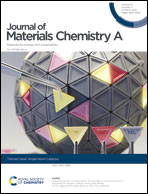Single-atom catalysts for thermal- and electro-catalytic hydrogenation reactions
Abstract
Hydrogenation reactions are among the most significant transformations in the chemical, energy, and environmental industries, which calls for a new generation of promising catalysts towards economic growth and environmental sustainability. Single-atom catalysts (SACs) have emerged as attractive candidates because of their maximum atom utilization, and high catalytic activity and selectivity. In this review, we introduce the unique properties of SACs including structural and electronic features, to guide the rational design of SACs and demonstrate a more detailed understanding of reaction mechanisms. Then, thermal catalytic hydrogenation of organic compounds and electrocatalytic hydrogenation with a particular focus on nitrate electroreduction reactions over SACs are further summarized, and the underlying mechanisms are discussed. Finally, the emerging issues and related perspectives for the future development of SACs in this field are proposed.

- This article is part of the themed collection: Single-Atom Catalysis


 Please wait while we load your content...
Please wait while we load your content...